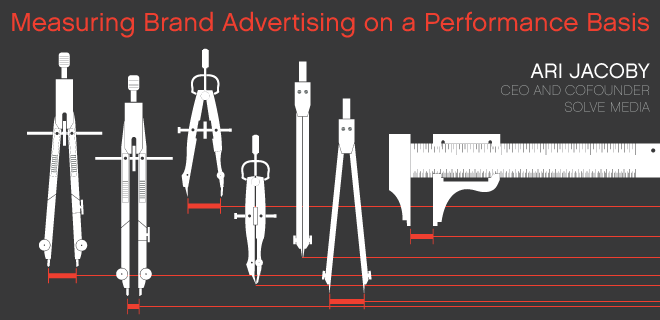
We’ve all heard that the definition of insanity is doing the same thing over and over but expecting different results. The online ad industry is vocal about the need for more brand advertising to move online as consumers tune out offline advertising on TV and in magazines. However, even with the emergence of accountable, brand-friendly ad formats – such as Cost Per View (CPV) video, and Cost Per Engagement (CPE) – little of the estimated 20% uptick in online advertising this year went to brand campaigns.
Most marketers continue to do what they have always done while expecting improved brand advertising results. And agencies and publishers are doing the same and expecting to take more brand dollars from TV. If the industry really wants to change the flow of brand ad dollars we must show that online brand advertising can change consumer behavior. To do this, we must change our own behavior regarding online brand advertising measurement.
Stop Worrying about the ‘View’
Brand advertising is not about views or clicks, and the sooner we eliminate these failed, legacy approaches as the underlying industry metric for online advertising, the better.
As part of the online brand building effort, advertisers and marketers need to feel confident that their online investments are working towards measurable brand building goals, and they have the right metrics that can accurately demonstrate success across their campaigns. Instead, what they find with CTR is a metric with limited ability to measure if a campaign or message actually resonated with consumers. Branding is emotive and the science behind measuring it can’t be limited to a simple click counter. Clicking an image has almost no bearing on a consumer’s recall, favorability or purchase intent.
Make Measurement Simple
So what’s the alternative measurement for brand campaigns? If the past is prologue, we can assume the answer is a more complex, acronym-laden scale or dashboard that in the end doesn’t provide better measurement of brand campaign effectiveness than CTR. And that would be a shame.
Instead, let’s go the other way and make things simple (again, changing our behavior). Let’s focus on engagement defined in this way: Did someone interact with the ad in a meaningful way (no errant mouse roll-overs, for example)? Did they comprehend the brand message? Did that message create a memory associated with the brand? Did that association positively impact a potential purchasing decision?
That seems easy, right? With these types of metrics in place, it becomes both possible and rational to pay for behaviors instead of paying for views, click-throughs or impressions. More importantly for publishers, it implies a big shift away from selling discounted audiences to selling premium behaviors, where a publisher can charge on a performance-basis when a user shares a link, watches a complete online video, prints a coupon, types a brand message into a box, or initiates a transaction of any sort. Behold, performance-based branding!
So What Does This Mean for Publishers?
Publishers who understand the behavioral patterns of their audience, and can translate that audience behavior into participation, will have a competitive advantage. With performance metrics in place, publishers will be able to sell behaviors and build advertising campaigns that can measurably deliver on both branding and business goals. This is a virtuous cycle: marketers will pay handsomely to buy distinct behaviors, which will afford publishers the opportunity to consistent improve their content.
This year, you can expect to see more online brand campaigns designed to produce specific user behaviors. And marketers will only pay when users take those actions. Marketers have already come to expect this from some forms of online advertising. Supported by better math and science, online brand advertising will finally have a more coherent story for marketers and media buyers, and attract the bigger budgets that have so far eluded the medium. Agencies and publishers who continue to transact on a lowest common denominator basis will see a race to the bottom for their services and inventory, alike.